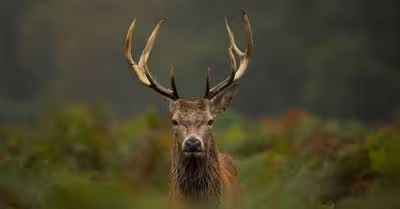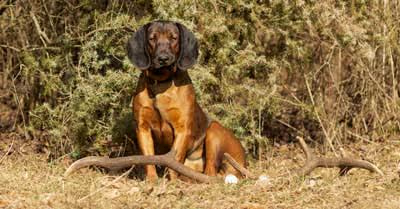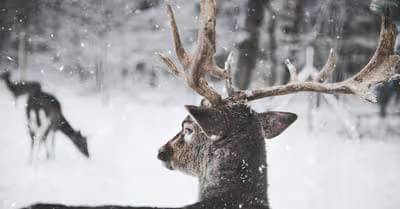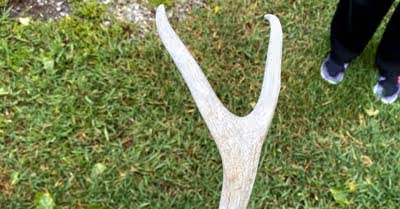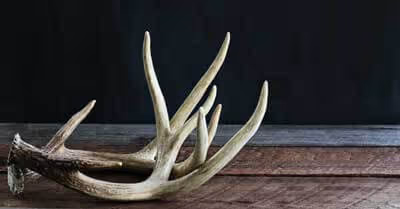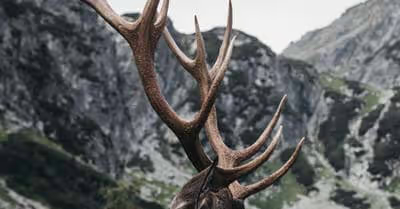Table of Contents
When and why do deer shed their antlers?
Deer antlers grow rapidly, as much as 2cm per day. Deer antlers grow faster than any other kind of tissue one can find on a mammal. Testosterone makes the antlers grow fast, and it only takes a few months for the antlers to reach their full size.
Deer can either shed their antlers earlier or later. Earlier shedding happens in the winter, especially if the winter is unusually harsh. Late shedding is more common for stronger and healthier bucks and happens in March or April.
After a deer's antlers start to weaken, it only takes a few days for them to fall off. As testosterone falls, the muscles holding the antlers in place get weaker. When the antlers bump into something, they will fall off if they are weak already.
The best time to look for antlers is in the spring when there are the most antlers on the ground. Exactly which month is best varies from one state to another. Deer do not shed their antlers at the same time everywhere.
Tips for becoming a better shed hunter
Good shed hunters know where to look, keep their eyes out for antlers that other people might walk past without noticing, and cover enough ground each day. Practice makes perfect, and it does not always take a long time to become a good shed hunter.
1) Take a dog with you
A dog will notice things that a human will easily miss. With a little creativity, you can train a dog to look for antlers. A professional trainer can help you train a dog to do this if you are having trouble, but you can usually train a dog to find antlers yourself.
Dogs love to chew on antlers. Give your dog a fresh antler to chew on, and then start hiding the antler from your dog to train your dog to find it. Reward your dog for finding a hidden antler.
Dogs have a powerful sense of smell, so they can find well-hidden antlers that you would miss even with binoculars. Train your dog to follow a scent trail to the antlers. A dog is particularly good in the late winter and early spring when snow can make antlers much harder to spot.
2) Return to the same spot more than once
If you walk around what seems like it must be a good spot to find antlers and find nothing, you might go back to the same spot again next month and do better. Sometimes, the deer haven't shed their antlers at that spot yet. Very well-fed deer may shed their antlers later.
3) Look beside fences and ditches that a deer might have to jump over
When a deer's antlers are weakening, they often fall off when the deer has to jump over something. You can find deer antlers beside fences, ditches, and other obstacles that a deer might jump over. Small creeks are another good place to look, and merely walking across rough terrain might knock a deer's antlers off if they are ready to drop.
4) Look near a deer's sources of food
The single best place to look when shed hunting is near a deer's sources of food. In the winter, farmer's fields are one of the best sources. Fields that have already mostly been picked may still have some food lying on the ground for deer to find.
Deer need to eat almost every day and have foods they prefer as well as foods they will eat if they can't find better foods. Deer can eat such a wide variety of plants that there is usually enough food available to them in the winter.
Leafy plants that keep their leaves in the winter are known collectively as "browse." Deer depend on this food during the late winter when the first deer are shedding their antlers.
In a part of the woods where there are many small green plants despite the leafless trees, you might find antlers. Deer can eat things you might not expect them to be able to eat, including poison ivy.
When better food is available, deer prefer to eat "mast," which is the fruit of mast trees, such as acorns. Chestnuts, walnuts, and pecans are all favorite deer foods.
As well as acorns, deer love hickory nuts and beechnuts. While there are not enough acorns for deer to eat these nuts all year round, you can find antlers near oak, hickory, chestnut, beech, and pecan trees.
5) Use binoculars
Binoculars can massively increase your success. It takes a long time to cover a lot of ground on foot. If you have binoculars, you can look at a much larger area every time you go out.
If you don't take binoculars with you, you might end up walking hundreds of feet to find that what you thought was an antler is only a stick. You can also spot antlers that you would have little chance of noticing with the naked eye.
6) Pay attention and look for small details
Most of the antlers I find shed hunting are not easy to spot. Don't expect to find a large pair of antlers lying there in an open field. This happens sometimes, but not often.
You are much more likely to see a tine just barely poking out of the grass around it. Even if there are not many other shed hunters in your area, it is still not usually very easy to spot antlers.
Antlers seem to "hide" in places where they are not easy to find. More than once, I have noticed brown antler points poking out of plants of a similar color. Other shed hunters might get to the easiest finds first.
Don't look for antlers; look for small parts of antlers that you can easily miss. Over time, you will get better at spotting these small details.
7) Learn from an expert
If you know someone who is great at shed hunting, find the opportunity to go with them. You may notice that they look in different spots than you do, or that they go more slowly and investigate each spot carefully, or that they travel more quickly and cover more ground. An expert shed hunter will do things differently.
What you learn firsthand from another shed hunter is information about how to find antlers in your local area and not merely information about how to find antlers in general. They may have tips that you have never heard of before.
8) Search an area systematically
When searching for sheds in an area, make sure not to cover the same spots repeatedly while missing many other spots. A grid search will help you completely cover an area. A grid search works best if you have some friends and a dog with you.
While it is easiest to find antlers at hot spots such as fences and mast trees, you can find antlers anywhere. After a systematic grid search, you can be reasonably sure that you have found any antlers in that area.
9) Travel deeper into the woods to find better sheds
Regardless of what time of the year you go shed hunting, other shed hunters may find antlers before you. If there are more than a few shed hunters in your area, you have to consider this.
If you go into deeper, thicker woods, you can find spots that other shed hunters won't look at. If it is legal to shed hunt in your local public forest, try looking through the woods' thicker parts.
Other shed hunters may have already found most of the antlers in the looser part of the forest if you are shed hunting on public property. Deeper in the woods, fewer people go, so you can find better sheds. Bring the right gear and venture into harsher environments that deter others.
10) Prepare for a good hike properly
When you go shed hunting, you are going to use up a lot of energy. You also may be exposed to the elements. Prepare for shed hunting the way you would prepare for a hike.
Before I go shed hunting, I always eat a good meal. What you eat the day before can also affect your energy levels. Make sure you eat properly both the day of the hunt and the day before.
Bring the right gear and supplies with you if you are going to be out for long. Bring food even if you already ate - you can burn through a thousand calories in a few hours.
Bring a small backpack even if you want to travel reasonably light. Bring a water bottle, energy bars, and nuts with you.
You may find yourself getting too hot or too cold if the weather changes when you are out. Take a hat and gloves with you even if you aren't quite sure you need them. Wear proper boots, wear durable clothing, and bring whatever else you need.
Recent Articles



